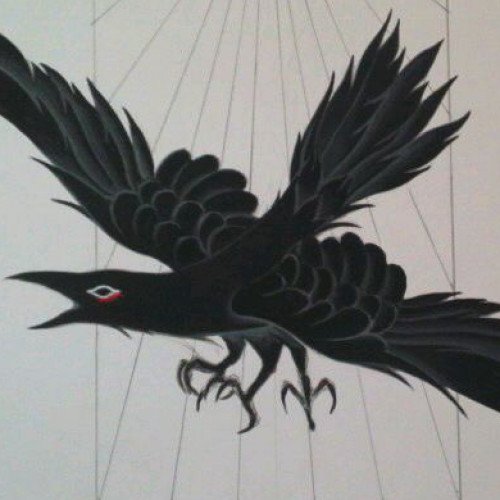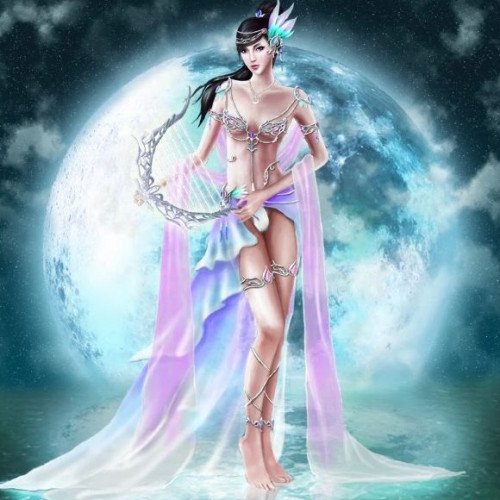Yatagarasu VS Asteria (mythology)

Yatagarasu
In Japanese mythology, this flying creature is a raven or a jungle crow called Yatagarasu (八咫烏, "eight-span crow")[16] and the appearance of the great bird is construed as evidence of the will of Heaven or divine intervention in human affairs.[17] Although Yatagarasu is mentioned in a number of places in Shintō, the depictions are primarily seen on Edo wood art, dating back to the early 1800s wood-art era. Although not as celebrated today, the crow is a mark of rebirth and rejuvenation; the animal that has historically cleaned up after great battles symbolized the renaissance after such tragedy. Yatagarasu as a crow-god is a symbol specifically of guidance. This great crow was sent from heaven as a guide for legendary Emperor Jimmu on his initial journey from the region which would become Kumano to what would become Yamato, (Yoshino and then Kashihara). It is generally accepted that Yatagarasu is an incarnation of Taketsunimi no mikoto, but none of the early surviving documentary records are quite so specific.[18] In more than one instance, Yatagarasu appears as a three legged crow not in Kojiki but in Wamyō Ruijushō. Both the Japan Football Association and subsequently its administered teams such as the Japan national football team use the symbol of Yatagarasu in their emblems and badges respectively.[19] The winner of the Emperor's Cup is also given the honor of wearing the Yatagarasu emblem the following season. Although the Yatagarasu is commonly perceived as a three-legged crow, there is in fact no mention of it being such in the original Kojiki. Consequently, it is theorised that this is a result of a later possible misinterpretation during the Heian period that the Yatagarasu and the Chinese Yangwu refer to an identical entity.
Statistics for this Xoptio

Asteria (mythology)
In Greek mythology, Asteria (; Ancient Greek: Ἀστερία, "of the stars, starry one") was a name attributed to the following eleven individuals: Asteria, a Titaness. Asteria or Astris, daughter of Helios and Clymene or Ceto, one of the Heliades. She married the river god Hydaspes (the modern Jhelum River) and became mother of Deriades, king in India. Asteria, one of the Danaïdes, daughters of Danaus who, with one exception, murdered their husbands on their wedding nights. She was, briefly, the bride of Chaetus. Asteria, one of the Alkyonides. Along with her sisters, she flung herself into the sea and was transformed into a kingfisher. Asteria, daughter of Hydeus, was the mother of Hydissos by Bellerophon. Her son is known for having founded a city in Caria which was named after him. Asteria, daughter of Coronus, and Apollo were possible parents of the seer Idmon. Asteria or Asterodia, mother of Crisus and Panopeus by Phocus. Asteria, daughter of Teucer and Eune of Cyprus. Asteria, the ninth Amazon killed by Heracles when he came for Hippolyte's girdle. Asteria, an Athenian maiden who was one of the would-be sacrificial victims of Minotaur, portrayed in a vase painting.Christoph Willibald Gluck gave the name Asteria to one of the characters in his 1765 opera Telemaco, though the name did not appear in Homer's Odyssey on which the opera was based.